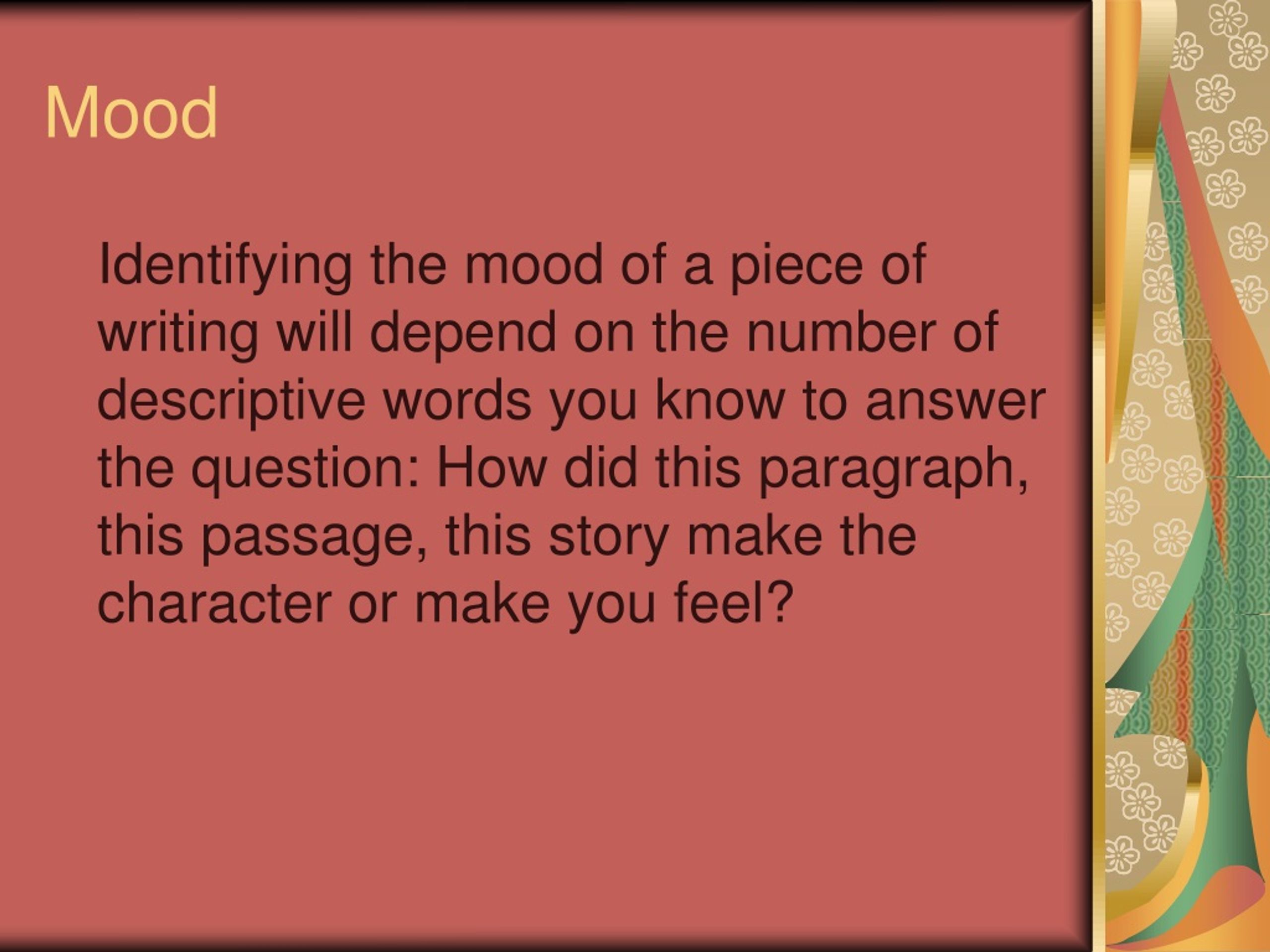
If you’ve inadvertently set up opposing tones within a scene, it will feel not quite right, maybe as if it’s out of focus or, more likely, as if a sheet of glass had shattered and the pieces were off kilter just a hair. If a scene seems off in a way that you can’t pinpoint or fix through changes in plot or character or dialogue, if it simply feels wrong or off, check to see if you’ve been consistent with tone (with mood as well). Tone should be consistent until something happens to change the narrator’s perceptions and responses. What he thinks about should reveal his desperation. So if a character is desperate, his actions, thoughts, and words should reflect that desperation. To create a tone that works, word choices have to match the character and the moment. Is he desperate, upbeat, dismissive? Is he clueless or callous or indifferent? How does the narrator or viewpoint character come across? How does he respond to story events and revelations? Keeping a tender attitude far from him in scenes when he’s away from his lover will reveal much of who he is and perhaps how much he relies on her to humanize him.
DIFFERENT MOODS OF A STORY SKIN
He might notice his lover’s soft skin or the colors she uses or her smile, things he doesn’t notice or comment on in other scenes. When you give him a scene with his love interest, it can have a tone far different from those in other scenes featuring the same character. Exclude the narrator’s attitude toward someone he loves if you want to portray him as distant and unfeeling add in this attitude when it’s time to reveal this facet of his personality. What’s absent from a story can affect tone almost as strongly as what is present. The viewpoint character’s perception of and reaction to sights, sounds, odors, touch, and taste add to tone. The menace of unrelenting footsteps on wooden stairs in the middle of the night or the hurried thud of footsteps down a dark alley would contribute to a tone different from the one created by the sounds of a toddler running down the hall to meet his daddy at the door. So what the viewpoint character smells and how those odors affect him influence tone. The tone of a scene can also be affected by manipulation of the sense elements. Tone can be manipulated by changing what the narrator focuses on and through his changing reactions to what is going on in the story as well as by changing the words used for his thoughts, action, and dialogue. Tone is created or altered by the way the viewpoint character/narrator treats the story problem and other characters, and by the way he responds to the events surrounding him. Tone is achieved through word choice (diction), sentence construction and word order (syntax), and by what the viewpoint character focuses on. Whatever attitude the narrator can take on, the scene or story can take on. Remember that these refer to the narrator’s (viewpoint character’s) attitude.Ī scene’s or story’s tone, expressed through the narrator’s attitude, could as easily be one of fear lessness or fear fulness, disbelief or detachment, or maybe unconcern or snarkiness or arrogance.

The child’s words and actions and facial expressions convey an attitude his mother doesn’t approve of.Įxamples of tone you might find in fiction are strident, uncaring, sassy, bossy, unconcerned, or flip. What does the mother mean by tone here? She’s talking about his sassy or smart-alecky attitude. We’re all familiar with a mother’s words to her mouthy son- Don’t you take that tone with me, young man. So the writer might come across as a know-it-all or a blowhard or as humble or solicitous. In non-fiction, tone is the writer’s attitude toward subject matter and reader. In a story with first-person POV, tone can also be the narrator’s attitude toward the reader. Tone in fiction is the attitude of the narrator or viewpoint character toward story events and other characters. They are achieved differently and they create different effects. And while you may hear the words used almost interchangeably, they are different. The feel of a story or scene is primarily achieved through three elements-tone, mood, and style. The tone of the story creates a certain atmosphere, evoking particular feelings in the reader.Apby Fiction Editor Beth Hill last modified April 20, 2013Įach piece of fiction, each section of text, has a particular feel.

The tone of this kind of story might be serious, formal or passionate. This mood is a reflection on the tone of the story.

If the writer builds a lot of tension and creates a sense of mystery then the reader will feel an atmosphere of anticipation and danger. The tone of the story creates a certain atmosphere, evoking particular feelings in the reader. In detecting tone, the reader should also examine the kind of atmosphere or mood that the story creates. Likewise, he might use vulgar language to indicate his disgust with a particular subject. A writer may use certain expressions or hyperbole to indicate a sarcastic attitude or tone.


 0 kommentar(er)
0 kommentar(er)
